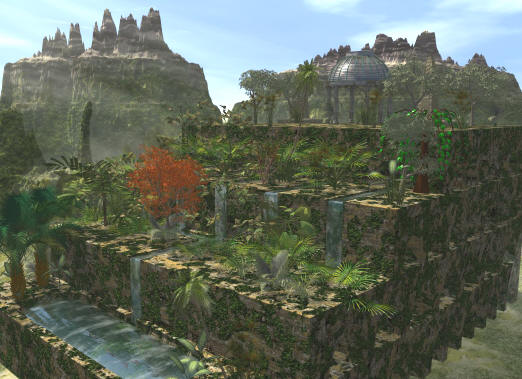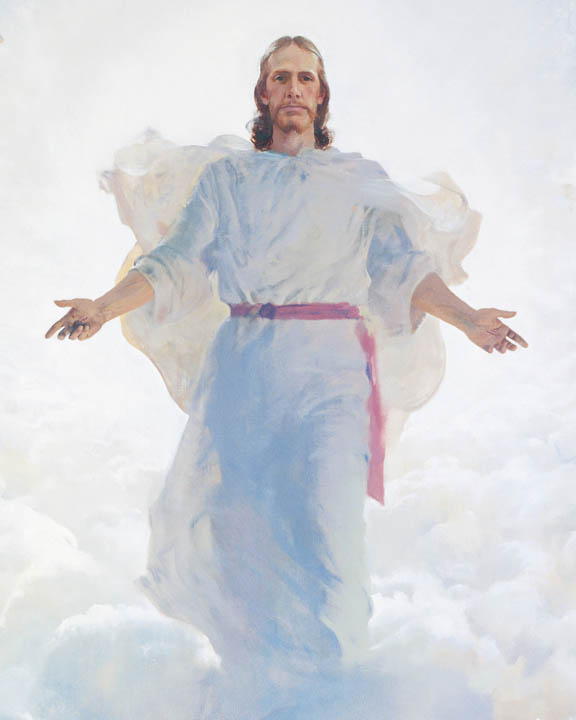This section of Isaiah emphasizes a word of warning to the wicked. Isaiah pronounces devastation on Israel and Judah, but also upon the wicked heathen nations.
 Babylon becomes the great example of worldly wickedness, and the term “Babylon” is used in the scriptures to identify materialism and worldliness. In the end, Babylon will fail and be replaced by the kingdom of Christ.
Babylon becomes the great example of worldly wickedness, and the term “Babylon” is used in the scriptures to identify materialism and worldliness. In the end, Babylon will fail and be replaced by the kingdom of Christ.
Phrases have dropped out of the King James Version of Isaiah 13, especially from verses 3, 8, and 22. They are complete in the Book of Mormon. (See 2 Nephi 23 .)
Isaiah 13:9–10 speaks of signs in the heavens that will precede the Second Coming of Jesus Christ. Isaiah 13:13 speaks of what will happen when Christ comes. The earth will actually move through the heavens to a location closer to the abode of God. Thus, the heavens will appear to flee. A huge earthquake will transform the earth, also. Only those who are “quickened” by the Holy Ghost will survive.
Isaiah 14 contains powerful references to the pre-mortal existence and identity of Lucifer as Satan.
“Isaiah again used dualism. Chapters 13 and 14 describe the downfall of Babylon, both of Babylon as an empire and of Babylon as the symbol of the world (see D&C 133:14 ). Thus, most scholars think “Lucifer, son of the morning” is the king of Babylon, probably Nebuchadnezzar. In the symbolic use of Babylon , (Babylon as spiritual wickedness and the kingdom of Satan), Lucifer is Satan. This interpretation is confirmed in latter-day revelation (see D&C 76:26–8 ). Satan and Babylon’s prince (both represented by Lucifer in this passage) aspire to take kingly glory to themselves, but in fact will be thrust into hell where there will be weeping and wailing and gnashing of teeth. Compare Isaiah 14:13–14 with Moses 4:1–4 , where Lucifer’s conditions for saving all men are given.”
Isaiah 17 explains how temporary is worldly power and might:
“All the powers of the world, including the neighbors of Judah as well as the nations of the world that despoiled the Lord’s people, will themselves be destroyed by the mighty judgments of God. (Syria is represented by ‘Damascus,’ and the Northern Kingdom of Israel is represented by the mountain defense of Ephraim.) Both Israel and the nations of the world are humbled by the hand of God. Yet the Lord promises, in Isaiah 17:6–8 , that a remnant of these nations, like the Israelites, will also be preserved. “Gleaning grapes” ( v. 6 ) are those few missed by the harvesters, and olives were harvested by shaking the branches, which always left a few scattered fruits in the topmost branches (see v. 6 ). Also like Israel, this remnant of the Gentiles will turn to God and forsake their false religions (see vv. 7–8 ).”
Isaiah 19 pronounces a curse upon Egypt, also symbolic of worldliness:
“Elder Bruce R. McConkie used a quotation that shows why Isaiah may have used such neighbors as Egypt, Moab, and Babylon to describe the wicked of latter days. Speaking of the world, he said: ‘Babylon marks its idolatry, Egypt its tyranny, Sodom its desperate corruption, Jerusalem its pretensions to sanctity on the ground of spiritual privileges, whilst all the while it is the murderer of Christ in the person of his members.’ ([Robert Jamieson and others, Commentary on the Whole Bible, ] p. 577.)” ( Doctrinal New Testament Commentary, 3:510.)
Isaiah 22:15–25 . Types of Christ —
 “Eliakim signifies The resurrection of the Lord; or, My God, he shall arise.” Thus, even the name typified Christ, “for the hope of salvation and eternal life comes only through Eliakim, the resurrection of Jesus Christ from the dead. ” (Adam Clarke, The Holy Bible . . . with a Commentary and Critical Notes, 4:107.)
“Eliakim signifies The resurrection of the Lord; or, My God, he shall arise.” Thus, even the name typified Christ, “for the hope of salvation and eternal life comes only through Eliakim, the resurrection of Jesus Christ from the dead. ” (Adam Clarke, The Holy Bible . . . with a Commentary and Critical Notes, 4:107.)
“When the patriarch Israel gave his son Judah his blessings, he said, among other things: “The sceptre shall not depart from Judah, nor a lawgiver from between his feet, until Shiloh come; and unto him shall the gathering of the people be” ( Genesis 49:10 ). Thereafter, the ruling power in Israel was enjoyed by Judah and was particularly evident in the reign of King David. The key of the house of David, the right to rule, was a symbol for the real right to rule, which is only enjoyed through the holy priesthood of God. This power was focused upon and centered in the Lord Jesus Christ, to whom was given power to “shut” and to “open” with no one who could override that power. John and Isaiah both clearly show that the key of David, or the government, was to be upon the shoulders of the Savior of the world (see Isaiah 9:6 ; Revelation 3:7 ).
“The ‘nail in a sure place’ ( Isaiah 22:23 ) is messianic and symbolizes the terrible reality of the cross, though only a part of the total suffering of the Lord that caused Him to ‘tremble because of pain, and to bleed at every pore, and to suffer both body and spirit’ ( D&C 19:18 ). Just as the nail of the cross that was driven in the sure place secured the body of the one being crucified, so the Savior Himself is, to all who will, a nail in a sure place, for He has given them power so that none need be lost (see John 17:12 ). As Christ brings the redeemed to the Father, the glory becomes His own, and the redeemed and their offspring will become part of the family of heaven under the throne of Christ” (see D&C 19:2 ; Matthew 28:18 ; 1 Corinthians 15:27–28 ; Philippians 2:5–11 ; 3:21 ).
*Parts of this article were adapted from the LDS Institute Old Testament Manual.
Next: Isaiah, Part 3
